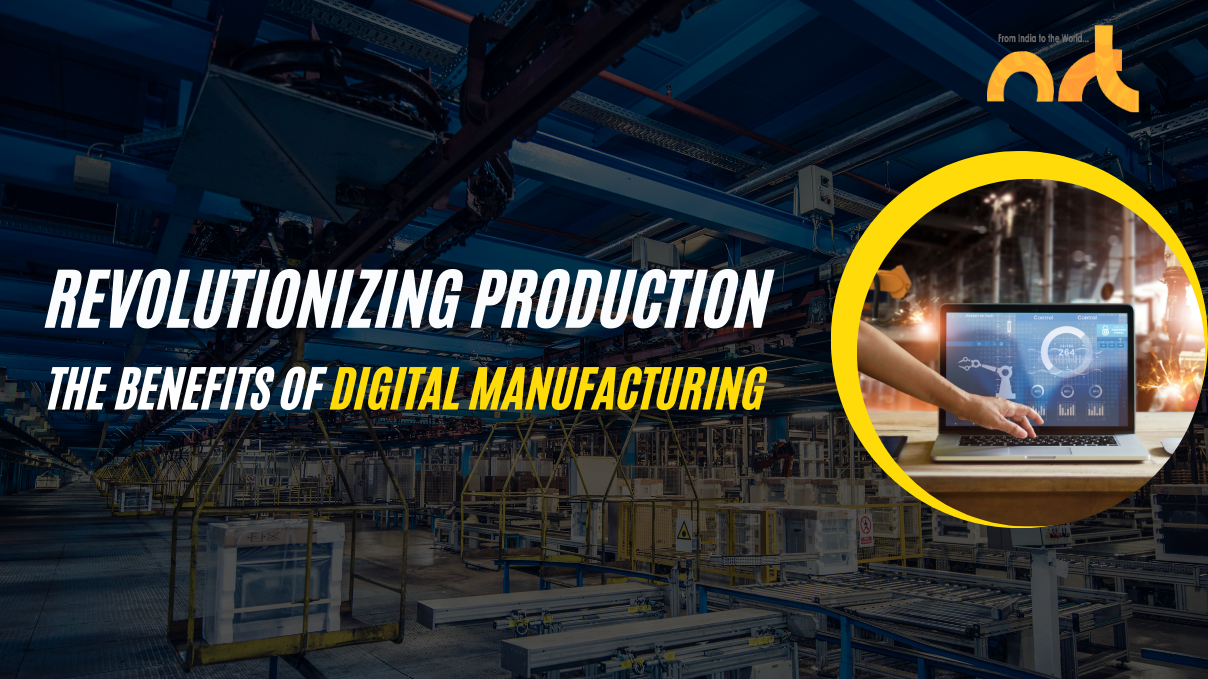The manufacturing industry is undergoing a profound transformation, driven by the integration of advanced technologies. Digital manufacturing, a term encompassing the use of digital tools and processes to design, produce, and manage products, is at the forefront of this revolution.
Key Benefits of Digital Manufacturing
- Increased Efficiency:
- Automation: Digital technologies automate repetitive tasks, reducing labor costs and increasing productivity.
- Streamlined Processes: Digital workflows streamline operations, minimizing bottlenecks and delays.
- Real-time Data: Digital systems provide real-time data, enabling proactive decision-making and problem-solving.
- Improved Quality:
- Precision: Digital controls ensure greater precision in manufacturing processes, leading to higher-quality products.
- Consistency: Automated systems maintain consistent standards, reducing defects and rework.
- Quality Assurance: Digital tools facilitate quality control and inspection, ensuring compliance with standards.
- Enhanced Flexibility:
- Customization: Digital manufacturing enables mass customization, tailoring products to individual preferences.
- Rapid Prototyping: Digital tools allow for rapid prototyping, accelerating product development and testing.
- Agile Production: Digital systems support agile production, enabling quick responses to market changes.
- Reduced Costs:
- Optimized Resource Utilization: Digital tools optimize the use of materials, energy, and labor, reducing costs.
- Inventory Management: Digital systems improve inventory management, minimizing waste and storage costs.
- Predictive Maintenance: Predictive maintenance using digital data helps prevent equipment failures, reducing downtime and maintenance costs.
- Enhanced Innovation:
- Simulation and Modeling: Digital tools enable simulation and modeling, facilitating experimentation and innovation.
- Collaboration: Digital platforms foster collaboration among design, engineering, and manufacturing teams, accelerating innovation.
- New Product Development: Digital manufacturing enables the development of new products and materials that were previously impossible.
Examples of Digital Manufacturing Applications
- Additive Manufacturing: 3D printing creates physical objects from digital models, enabling customization and complex geometries.
- Robotics: Automated robots perform tasks with precision and speed, improving efficiency and safety.
- Internet of Things (IoT): Connected devices collect data, enabling real-time monitoring and optimization of manufacturing processes.
- Artificial Intelligence (AI): AI algorithms analyze data and make intelligent decisions, such as predicting equipment failures or optimizing production schedules.
The Future of Manufacturing
As digital technologies continue to evolve, the potential benefits of digital manufacturing will only grow. By embracing these innovations, manufacturers can position themselves for long-term success in a rapidly changing market.
FAQs
What is digital manufacturing?
Digital manufacturing is the use of digital technologies to design, produce, and manage products. It involves the integration of computer-aided design (CAD), computer-aided manufacturing (CAM), 3D printing, and other digital tools.
How does digital manufacturing differ from traditional manufacturing?
Digital manufacturing is more automated, flexible, and data-driven than traditional methods. It allows for customization, rapid prototyping, and improved quality control.
What are the key benefits?
Increased efficiency, improved quality, enhanced flexibility, reduced costs, and enhanced innovation are the primary benefits of digital manufacturing.
How can digital manufacturing reduce costs?
By automating tasks, optimizing resource utilization, and reducing waste, digital manufacturing can significantly lower production costs.
What role does 3D printing play?
3D printing allows for the creation of complex and customized products that would be difficult or impossible to produce using traditional methods.
How does automation contribute?
Automation reduces labor costs, improves efficiency, and ensures consistency in production.
What is the Internet of Things (IoT) and how does it relate?
The IoT connects devices and machines, enabling real-time data collection and monitoring, which can be used to optimize production processes.
What are the challenges of implementing?
Initial investment, skill gaps, data security, and sustainability are some of the challenges associated with digital manufacturing.
What are the future trends?
Future trends include additive manufacturing, Industry 4.0, sustainable manufacturing, and human-machine collaboration.





